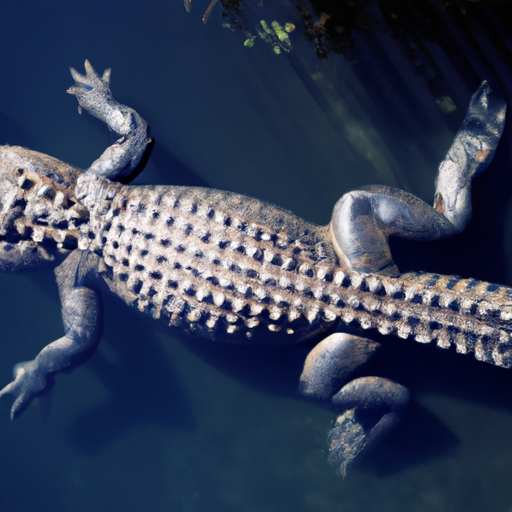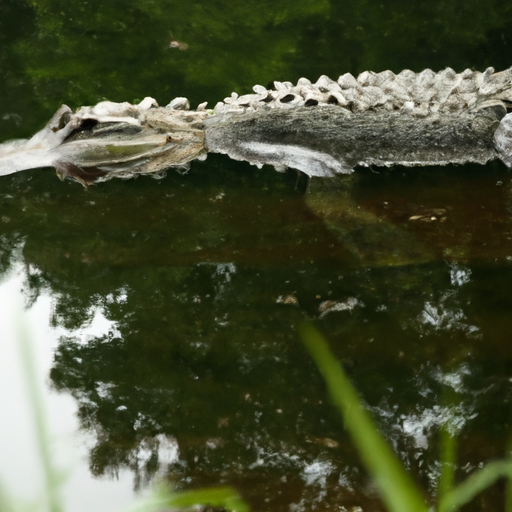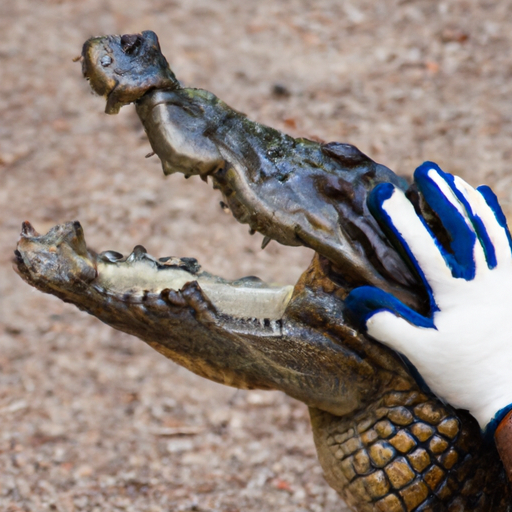Intriguing, isn’t it? The question that’s been on the tip of your tongue since you saw the title: Can an alligator drown?
Seems like a pretty straightforward question, right? Well, prepare to be surprised. Contrary to what you might assume, alligators are not invincible creatures of the water.
As we explore the anatomy and behaviors of these fearsome reptiles, you’ll discover the surprising truth about whether an alligator can actually drown.
It’s time to debunk myths and dive into the fascinating underwater world of alligators.
Can An Alligator Drown
Alligators are fascinating creatures that have captured the curiosity of humans for centuries. From their powerful jaws to their unique adaptations for survival, these reptiles are truly remarkable.
One question that often arises when discussing alligators is whether or not they can drown. In this article, we will explore the physiology of alligators, their adaptation to water, and the factors that can lead to drowning in these ancient creatures.
So, let’s dive in and discover the truth about alligators and drowning.

An Overview of Alligators
Alligators are large, semi-aquatic reptiles that belong to the crocodilian family. There are two species of alligators, the American Alligator (Alligator mississippiensis) and the Chinese Alligator (Alligator sinensis). Both species are well-known for their elongated snouts, muscular bodies, and armored skin. Alligators play a vital role in their ecosystems as top predators, feeding on a variety of animals including fish, turtles, birds, and mammals.
Physiology of Alligators
To understand the drowning capabilities of alligators, it is important to comprehend their physiology. Alligators have several physical adaptations that enhance their ability to survive in aquatic environments. Their muscular tails, webbed feet, and streamlined bodies allow them to move efficiently through water. Additionally, their eyes and nostrils are situated on top of their heads which allows them to see and breathe while the rest of their body remains submerged.
Alligators and Water Adaptation
Alligators are well-adapted to an aquatic lifestyle. They spend a significant portion of their lives in the water, whether it be in swamps, marshes, or lakes. Their bodies are designed to excel in this environment, with a thick layer of insulating fat that allows them to maintain their body temperature even in cooler waters. Furthermore, alligators have special glands located on their tongues that excrete excess salt, enabling them to tolerate saltwater habitats.
Alligator Lungs and Breathing Mechanism
Unlike mammals that have lungs capable of continuous gas exchange, alligators have a more primitive respiratory system. Alligators rely on a form of breathing known as buccal pumping. This mechanism involves drawing in air through their snouts and pushing it into their lungs by closing their glottis and using their powerful diaphragm muscle. When submerged, alligators can hold their breath for extended periods, conserving oxygen and avoiding detection by potential prey or predators.
Alligator Submergence Time
The ability of alligators to remain submerged for extended periods is truly impressive. While it can vary depending on factors such as temperature, activity level, and overall health, alligators can typically hold their breath for 10 to 15 minutes. Some reports have even suggested that alligators have been able to stay underwater for up to two hours! This remarkable adaptation allows them to patiently wait for prey to approach or ambush unsuspecting animals that come too close to the water’s edge.
Understanding Drowning in Alligators
Although alligators are well-adapted to aquatic environments, they are not immune to drowning. In fact, drowning is a significant cause of death for alligators, especially among the young and inexperienced individuals. Drowning can occur when alligators become trapped in small or shallow bodies of water, such as ditches or culverts, where they are unable to reach the surface to breathe. Additionally, alligators can become disoriented or exhausted during aggressive territorial disputes, increasing the risk of drowning.
Predation vs. Drowning
It is important to note that drowning in alligators is distinct from predation. Alligators are highly efficient predators, using ambush techniques to catch their prey. When an alligator captures an animal, it typically kills it by drowning. By seizing their prey and forcefully dragging it underwater, alligators subdue their victims before consuming them. This act of drowning aims to immobilize the prey and make it easier for the alligator to consume.
Factors Affecting Alligator Drowning
Several factors can affect the likelihood of an alligator drowning. Water depth is a critical factor, as alligators need enough space to submerge their entire body and reach the surface to breathe. The presence of vegetation or debris can also impede an alligator’s ability to surface, increasing the risk of drowning. Weather conditions, such as storms or flooding, can create unpredictable environments, making it more challenging for alligators to navigate and find suitable breathing spots.
Human Interactions and Drowning Risks
Human interactions with alligators can also contribute to drowning risks. While alligators are typically wary of humans, incidents can occur when people venture too close to an alligator or disturb it in its natural habitat. Swimming in bodies of water inhabited by alligators poses a potential drowning risk, as alligators may perceive humans as prey or become defensive if they feel threatened. It is crucial to exercise caution and respect when encountering alligators to minimize the likelihood of a dangerous encounter.
Final Thoughts
In conclusion, alligators are well-adapted to an aquatic lifestyle, but they are not immune to drowning.
These impressive reptiles have a unique set of physiological adaptations that allow them to thrive in water, including their ability to hold their breath for extended periods.
However, certain circumstances and factors can increase the risk of drowning for alligators.
Understanding these risks and practicing caution when interacting with these magnificent creatures is essential for both their conservation and our safety.
So next time you encounter an alligator, remember to give them the space and respect they deserve in their natural habitat.




